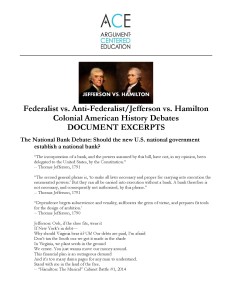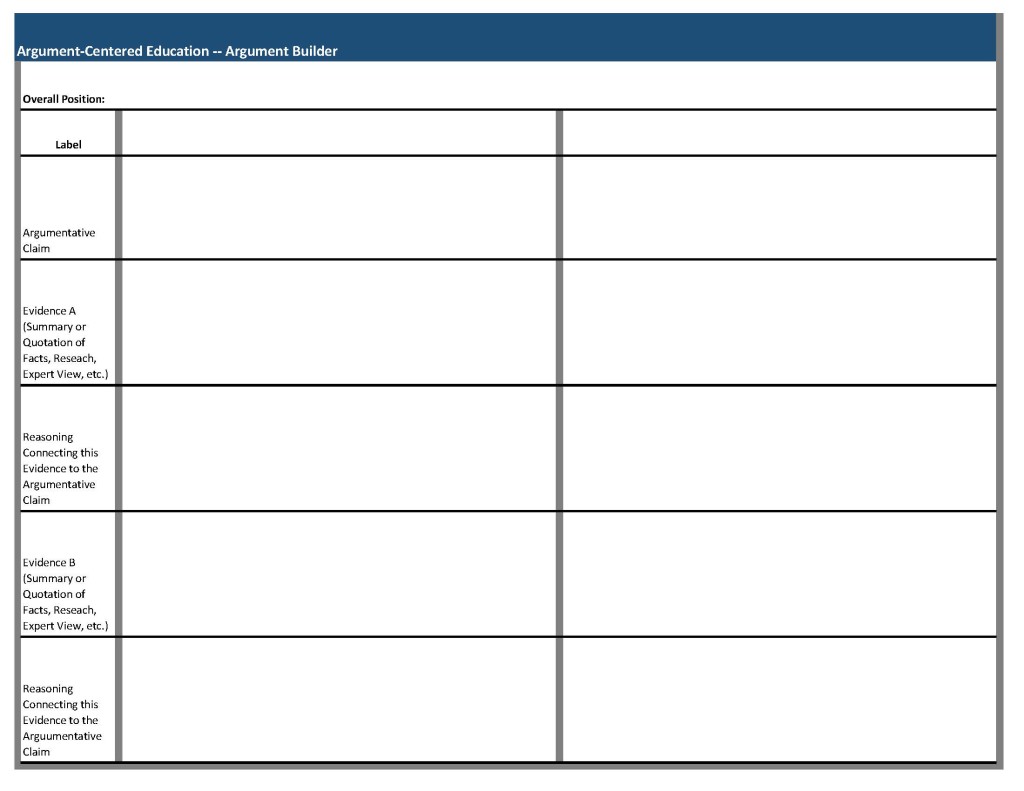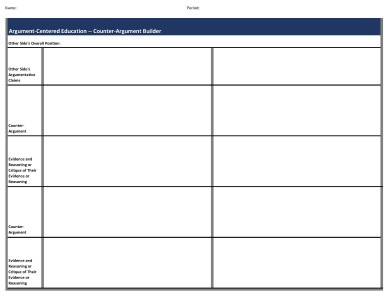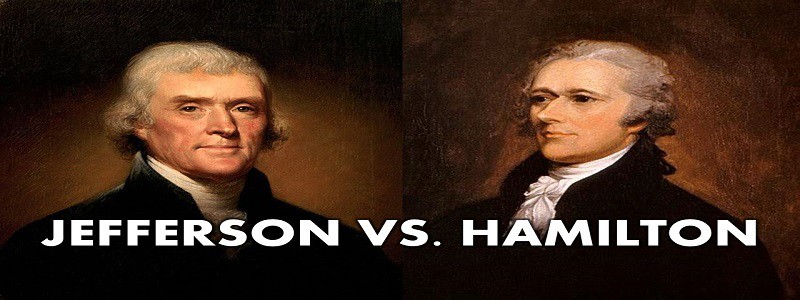
The Federalist v. Antifederalist Debates: Hamilton and Jefferson’s Arguments Forge American Political History
This argument-based project on the Federalist v. Antifederalist debates was developed for one of Argument-Centered Education’s partner high schools this semester, and the early signs are its resonating with both teachers and students alike.
Overview
The debates that took place in the colonial America, shortly the formation of our nation, between Thomas Jefferson and Alexander Hamilton had a profound effect on our political history. The first Secretary of State in American history (Jefferson) and the first Secretary of the Treasury (Hamilton) had disagreements about the size and role of the new national government of the United States, and those disagreements generated factions which would evolve into the first political parties in America.
The opposing political rhetoric and argumentation fomented by their two factions – Hamilton’s Federalists and Jefferson’s Anti-Federalists – had its origin in the deliberations and disputes of the constitutional convention of 1787. Both men vied for influence within the first president George Washington’s administration (1789 – 1797), and both men’s factions conducted public projects of persuasion, writing in newspapers, broadsheets, and pamphlets, the political media of the late 18th century.
There was little of consequence related to the founding of the United States’ political and even economic systems that the Federalist vs. Antifederalist debates didn’t address or touch on, but three of the most fundamental and widely-resonating issues were the debates over the creation of a national bank, the enumerated versus implied powers of the U.S. Congress, and the balance of national and state governmental powers. These are the three debatable issues, then, for this project.
Should the new U.S. national government establish a national bank?
Should the powers of the new U.S. national government be strictly limited to those ‘enumerated’ in the U.S. Constitution, or should it be given powers ‘implied’ by the document?
Should the new U.S. national government be more powerful or less powerful than state governments?
In this argument-centered unit, students engage in “published” debates, taking on the roles of Federalist or Antifederalist leaders and writers of the period. Students use primary and secondary texts to learn and understand historical content, which includes the prevalent controversies at the constitutional convention and thereafter among the nation’s founding leaders in addition to essential principles of civics and governance that have determined the development of American political institutions and discourse from the colonial period through the present. This project also practices and enhances students’ thinking and reasoning skills, leading them to engage with historical subject matter by making the best arguments they can defending their faction’s position on the key controversy, then responding to the arguments of their peers representing the opposite faction, and finally making a refutational rejoinder to the other faction’s rebuttal of their initial argument.
Procedure and Resources
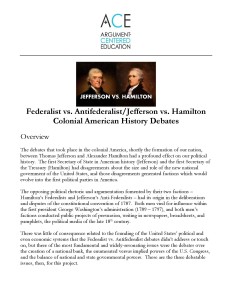 As this project overview details in its “Method and Procedure” section, students are divided into groups of six, and then each group is further divided into two teams of three, one adopting the roles and names of the leading Federalists, the other doing the same for the Antifederalists.
As this project overview details in its “Method and Procedure” section, students are divided into groups of six, and then each group is further divided into two teams of three, one adopting the roles and names of the leading Federalists, the other doing the same for the Antifederalists.
Instructional content is delivered in the context of the three historical debates promulgated by the two factions and organizing the project — on formation of a national bank, on the “enumerated” versus “implied” powers of the U.S. national government, as codified by the recently ratified Constitution, and the question of the relative power of the national and state governments.
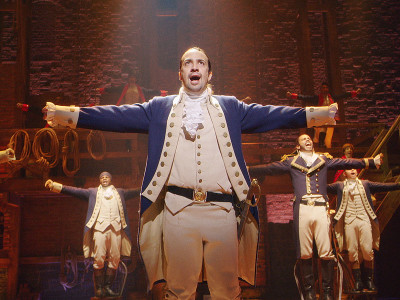 This project makes use of clips from the smash-hit on Broadway, “Hamilton: The Musical,” written by and starring the MacArthur Genius Grant winner Lin-Manuel Miranda. Portions of the historically accurate script bear directly on the debatable issues. The project also has students study a set of primary document excerpts which prominently include small portions taken from the contemporaneous writings of Hamilton and Jefferson on these controversies.
This project makes use of clips from the smash-hit on Broadway, “Hamilton: The Musical,” written by and starring the MacArthur Genius Grant winner Lin-Manuel Miranda. Portions of the historically accurate script bear directly on the debatable issues. The project also has students study a set of primary document excerpts which prominently include small portions taken from the contemporaneous writings of Hamilton and Jefferson on these controversies.
Students complete Argument Builders and Counter-Argument Builders within their factions, exchanging them with their counter-parts from the other faction, leading them to track the on-going written debate that is developing and leading them to build final rejoinders, refuting the counter-arguments of the opposite faction.
Through this process, each faction is collecting an original “opinion piece,” a rebuttal from the other faction, and a final rejoinder, for each of the three prominent controversies addressed by the Federalists and Antifederalists. They then “publish” them in their period newspaper, either The Federalist Tribune or The Antifederalist Beacon.
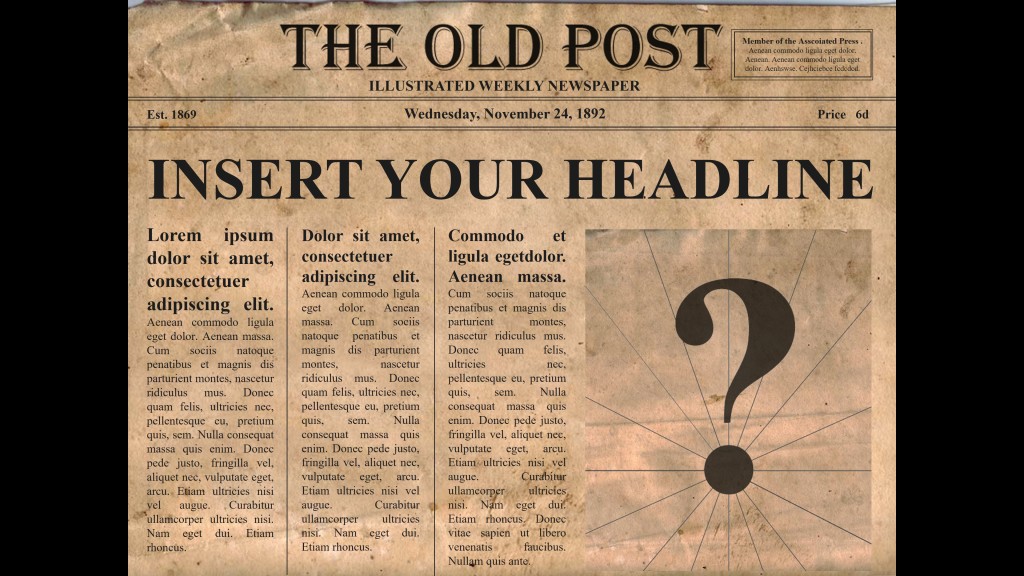
Students are assessed based on the key components of academic argument, as demonstrated in their three argument writing pieces: their original argumentation in their “opinion piece,” their rebuttal of their counterpart’s arguments, and their final rejoinder of the other side’s counter-arguments against their position.
 Taking an argument-centered approach to what may be the most historically significant debates in American political history seems to make more than a little sense. And when the currency and entertainment value of “Hamilton: The Musical” is blended in, along with the inherently engaging dynamic created in classroom argumentation between groups of students, connected to its focus on the key academic skills, the underlying logic that makes this project so academically effective is easy to discern.
Taking an argument-centered approach to what may be the most historically significant debates in American political history seems to make more than a little sense. And when the currency and entertainment value of “Hamilton: The Musical” is blended in, along with the inherently engaging dynamic created in classroom argumentation between groups of students, connected to its focus on the key academic skills, the underlying logic that makes this project so academically effective is easy to discern.


